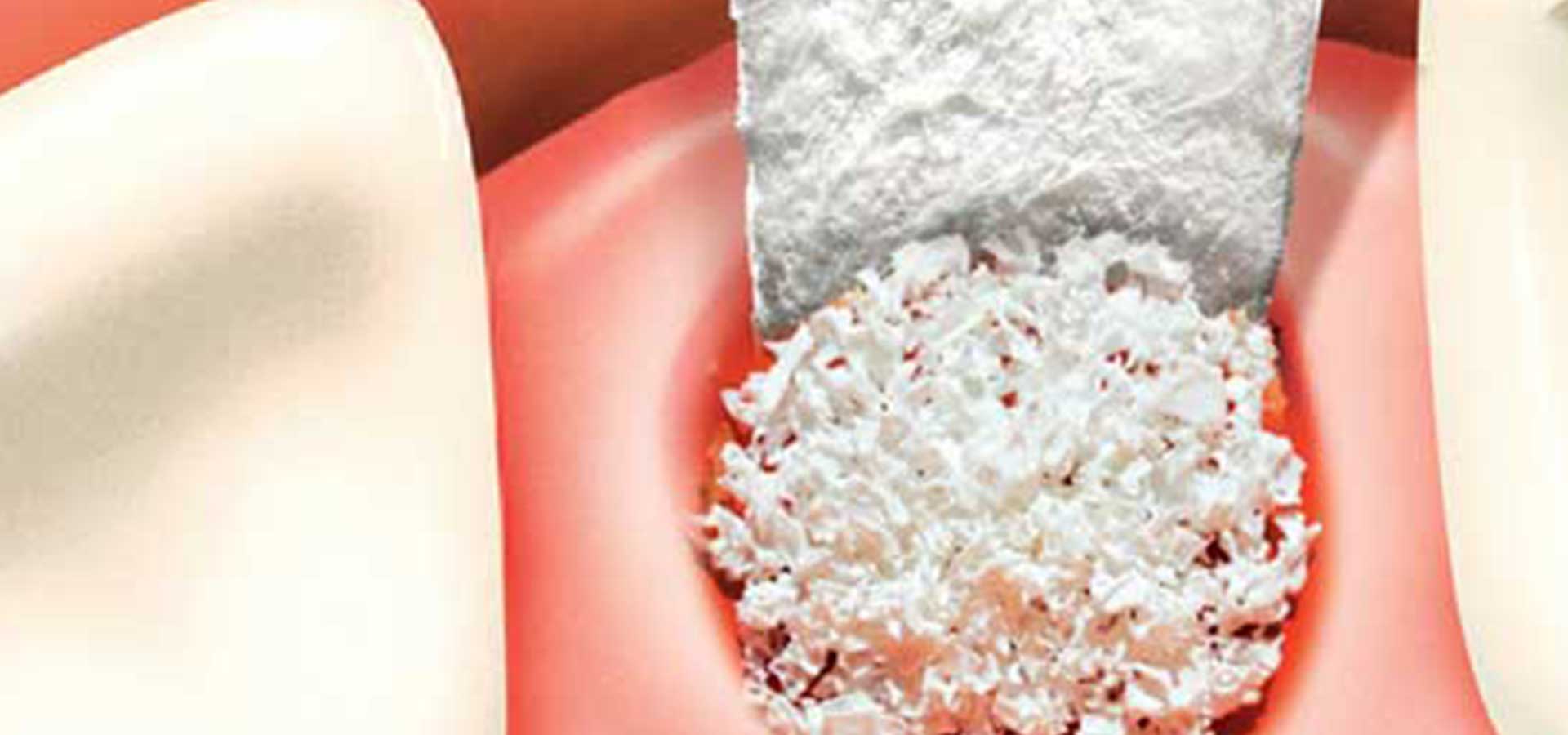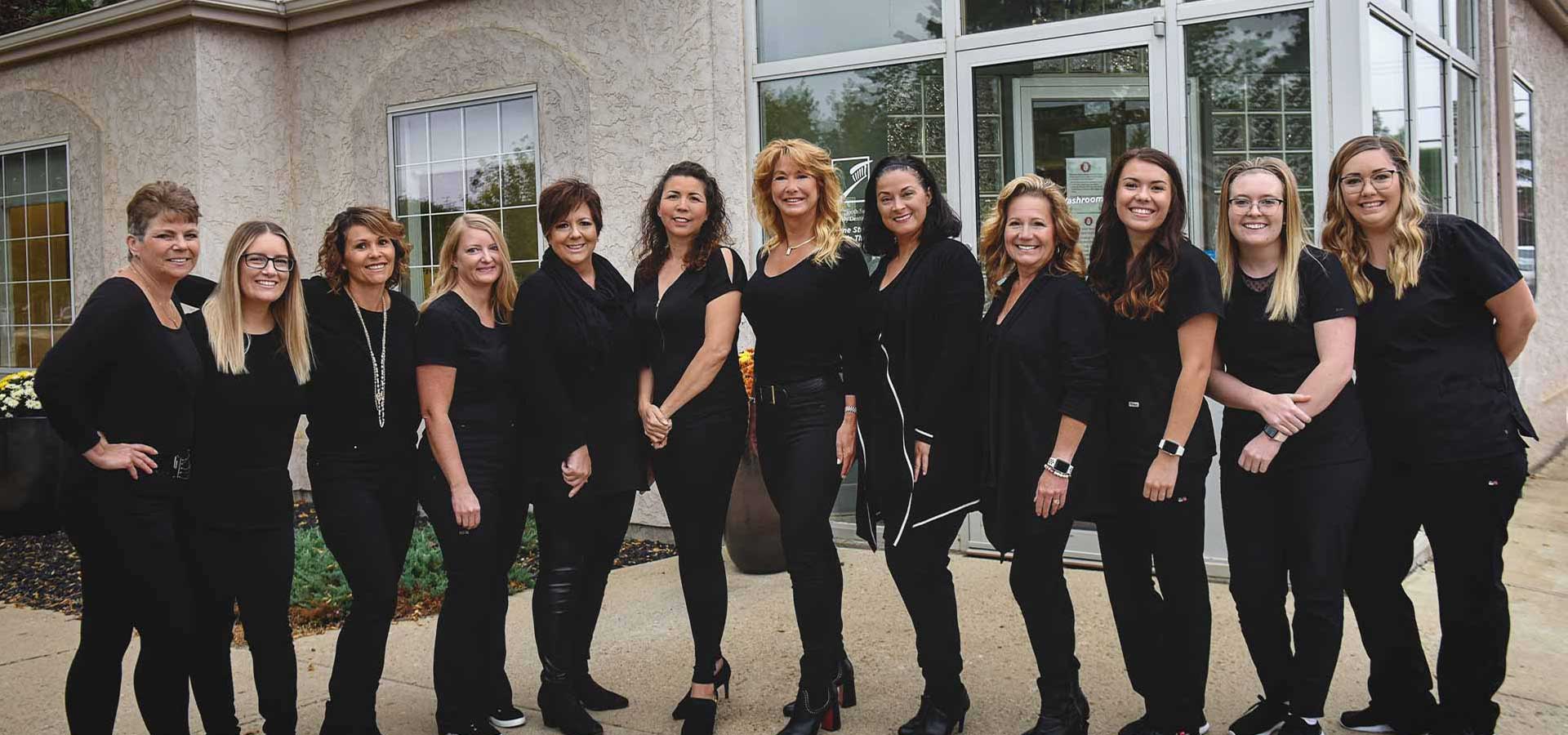- Why Choose Tooth Suite?
- Dental Services
- New Patients
- Tooth Suite Dental Team
- Appointments
- Contact Us
Periodontal disease is the leading cause of bone loss in the oral cavity, though there are others such as ill-fitting dentures and facial trauma. The bone grafting procedure is an excellent way to replace lost bone tissue and encourage natural bone growth. Bone grafting is a versatile and predictable procedure that fulfills a wide variety of functions.
A bone graft may be required to create a stable base for dental implant placement, to halt the progression of gum disease, or to make the smile appear more aesthetically pleasing.
There are several types of dental bone grafts:
- Autogenous bone graft – In this type of graft, the bone is removed from elsewhere in the body and implanted in the mouth. Common donor sites for bone grafting include the iliac section of the pelvis, the chin, and the posterior third molar areas of the jaw. If large amounts of bone need to be harvested, the hip or the shin bone (tibia) is generally used.
- Allograft – Synthetic bone (manmade) can be created in the laboratory and used in the bone grafting procedure. Bone can also be obtained from a bone bank (cadaver bone).
- Xenograft – This is the implantation of bovine (cow) bone. A xenograft is perfectly safe and has been used successfully for many years. Ample bone can be obtained, and no secondary donor site is necessary.

Reasons for bone grafting
There are a wide variety of reasons why bone grafting may be the best option for restoring the jawbone.
- Dental implants – Implants are the preferred replacement method for missing teeth because they restore full functionality to the mouth; however, implants need to be firmly anchored to the jawbone to be effective. If the jawbone lacks the necessary quality or quantity of bone, bone grafting can strengthen and thicken the implant site.
- Sinus lift – A sinus lift entails elevating the sinus membrane and grafting bone onto the sinus floor so that implants can be securely placed.
- Ridge augmentation – Ridges in the bone can occur due to trauma, injury, birth defects, or severe periodontal disease. The bone graft is used to fill in the ridge and make the jawbone a uniform shape.
- Nerve repositioning – If the inferior alveolar nerve requires movement to allow for the placement of implants, a bone grafting procedure may be required. The inferior alveolar nerve allows feeling and sensation in the lower chin and lip.
What does bone grafting treatment involve?
Bone grafting is a fairly simple procedure that may be performed under local anesthetic; however, if large amounts of bone area need to be grafted, general anesthetic may be required.
Initially, the grafting material needs to either be harvested or prepared for insertion. A small incision is made in the gum tissue and then gently separated from the bone. The bone grafting material is then placed at the affected site.
The bone regeneration process may be aided by:
- Gum/bone tissue regeneration – A thin barrier (membrane) is placed below the gum line over the grafting material. This barrier creates enough space for healthy tissue to grow and separates the faster-growing gum tissue from the slower growing fibers. This means that bone cells can migrate to the protected area and grow naturally.
- Tissue stimulating proteins – Enamel matrix proteins occur during natural tooth development. Emdogain is a matrix protein product that is usually placed on the affected site before the gum is sutured. It mediates the formation of acellular cementum on the tooth which provides a foundation to allow periodontal attachment to occur. Tissue stimulating proteins help to create lost support in areas affected by periodontal defects.
- Platelet-rich growth factors –A high platelet concentration liquid can be used to create a blood clot at the site of a wound. It has recently been discovered that PRGF also stimulates bone growth – meaning a denser graft in a shorter time period.
The gum is sutured in place and a follow up appointment will need to be made within 10 days to assess progress. Bone grafting is a highly successful treatment and a good base for further periodontal restorations.
Call Tooth Suite Family Dentistry at (780) 875-4312
to schedule a Bone Grafting Consultation today!
Tooth Suite Family Dentistry has been proudly serving
Lloydminster for over 20 Years!
Disclaimer
Dr. Marianne Stelmaschuk is a Lloydminster General Dentist. She is not a specialist in Cosmetic or Family Dentistry. Cosmetic and Family Dentistry are not specialties recognized by the Alberta Dental Association & College of Dental Surgeons of Alberta (CDSA). She provides Cosmetic and Family Dental procedures such as Porcelain Veneers, Dental Crowns, Invisalign, and Teeth Whitening as part of her General Dentistry license. As a Lloydminster Family Dentist, she provides General Dental procedures for all ages within the family. Dr. Prabhjot Singh is a licensed Oral and Maxillofacial surgeon and can offer Oral Maxillofacial specialty services as part of his license.



